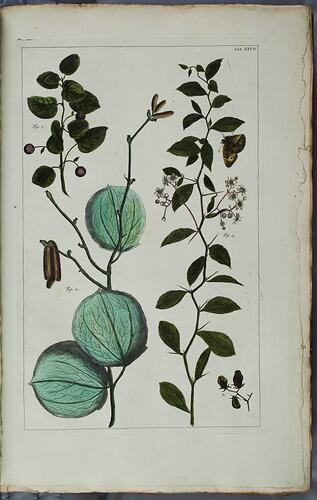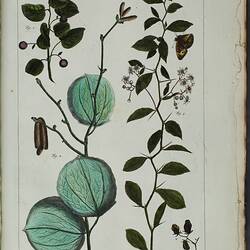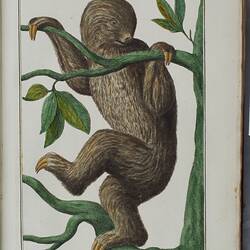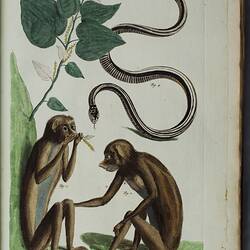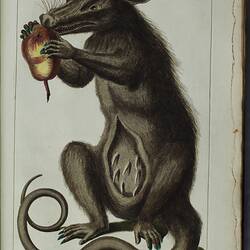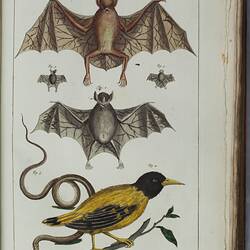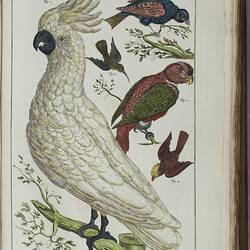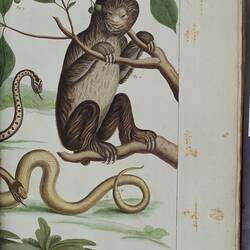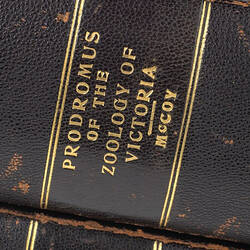Summary
Full title: 'Locupletissimi rerum naturalium thesauri accurata descriptio, et iconibus artificiosissimis expressio, per universam physices historiam : opus, cui, in hoc rerum genere, nullum par exstitit'.
This work by Dutch apothecary Albertus Seba details the vast collection amassed by Seba in the early eightheenth century. In English it is referred to as his 'Thesaurus', however we would be more likely to describe this as a catalogue of his collection today.
The total work is an extensive four tomes, comprising 446 copperplate engravings with descriptions. Published in Amsterdam by Janssonio-Waesbergios between 1734 and 1765, the second two volumes were published posthumously. After Seba died in 1736, his heirs auctioned off his collection in order to continue funding the publication of this work. Tomes 3 and 4 were edited by H.D. Gaubius, P. Massuet, L. Jancourt, and P. van Musschenbroek. The illustrations were drawn and engraved by various artists, and are thought to have been supervised by P. Tanje.
Physical Description
This volume comprises plates from tomes 1 & 2 only. The set is bound differently to the norm, with the plates and text in separate volumes rather than interleaved throughout. Includes 225 plates numbered Tab. I-CXI and Tab. I-CXIV : hand coloured engravings ; 55cm. Nineteenth century quarter bound red leather binding with raised bands on spine.
Significance
This work is a significant pre-Linneaen work of natural history and depicts an example of the private 'cabinet of curiosity' style of collection that were the forerunners to modern public museum collections.
Albertus Seba (1665-1736) was an apothecary living in Amsterdam in the late 17th and early 18th centuries, when the city was a major trading centre. Seba gained familiarity with natural specimens through his profession, and capitalised on his interactions with sailors and traders seeking medical treatment to obtain specimens for his collection. Seba was known to exchange his services as an apothecary for specimens. His collection became famous throughout Europe and was visited by many prominent naturalists of the day. In 1717 he sold his collection to Peter the Great, Czar of Russia. With the enthusiasm of a true collector, Seba immediately set about establishing a second, even larger collection. This collection formed the basis of this work.
The 'Thesaurus' contains text written by Seba in consultation with important scientists of the time, including contributions on fish from P. Artedi. Seba made an attempt to further scientific knowledge, for instance by arranging the descriptions into distinct categories. However, as can be seen by the fantastical quality of some of the illustrations, he was still highly influenced by a 'cabinet of curiosity' approach to the natural world. In fact, in his willingness to believe in the weird and wonderful, Seba was the victim of a famous hoax. The seven-headed hydra featured in this work was later proved to be made from parts of weasels and snakes sewn together.
The work is rare, with Museums Victoria holding the only known copies in public collections within Australia. The Museums Victoria Library holds two sets of Seba's 'Thesaurus', both acquired by former museum director Professor Frederick McCoy in 1859. One set is black and white, and the other is hand-coloured. They are among the early works purchased by Professor McCoy when he began developing the library collection.
More Information
-
Collecting Areas
-
Author
-
Purchaser of Item Depicted
Prof Frederick McCoy - University of Melbourne (The), Melbourne, Australia, 1859
-
Category
-
Discipline
-
Type of item
-
Exhibition Collection Management
620 mm (Width), 544 mm (Depth), 270 mm (Height)
Estimated display dimensions - open book (Scientific Illustration)
-
Maximum dimensions
370 mm (Width), 87 mm (Depth), 537 mm (Height)
Measurement From Conservation.
-
References
Online version via BHL: [Link 1] Seba, Albertus 2011, Cabinet of natural curiosities = Das Naturalien-kabinett = Le cabinet des curiosites naturelles : locupletissimi rerum naturalium thesauri, 1734-1765, Koln, Taschen.
-
Keywords
Natural history illustration, Natural history literature, Cabinets of curiosities, Zoology
